| |
|
|
|
|
|
|
|
|
|
|
| |
| |
 |
|
| |
田润德
编译文/图 2020-07-13
20:36 |
|
| |
|
|
|
|
| |
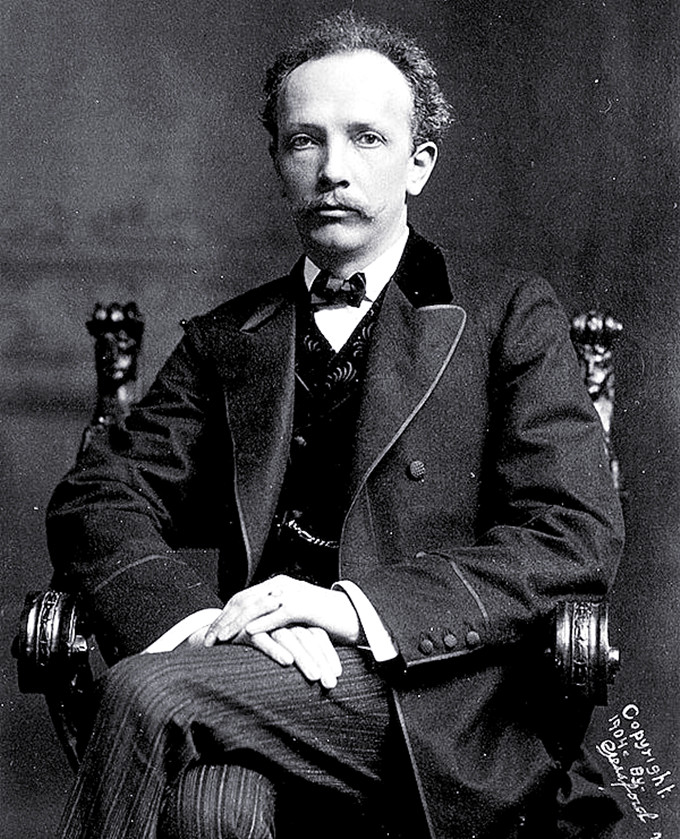 |
|
|
|
| |
理查·施特劳斯(Richard Strauss
1864-1949) |
|
|
|
| |
|
|
|
|
| |
乔治·普莱特指挥班贝克交响乐团演奏理查.施特劳斯
交响诗《蒂尔·艾伦施皮格尔的恶作剧》
|
|
|
|
| |
Till Eulenspiegels lustige Streiche(Georges Prêtre) |
|
|
|
| |
作曲:理查。施特劳斯
曲名:
《蒂尔·艾伦施皮格尔的恶作剧》 Till
Eulenspiegels lustige Streiche
流派:晚期浪漫主义音乐
简介补充:从奥林匹克体育场在Garmisch-Partenkirchen,德国
班贝格交响乐团
乔治·普雷特——指挥家
理查德·施特劳斯-《蒂尔·艾伦施皮格尔的恶作剧》( Till
Eulenspiegels lustige Streiche), Op. 28
这场晚会音乐会是从加米施-帕滕基兴奥林匹克体育场现场录制的。
乔治·普雷特指挥班贝格交响乐团演奏施特劳斯的最后一部全音阶管弦乐作品“阿尔卑斯山交响曲”和他的交响诗《蒂尔·艾伦施皮格尔的恶作剧》。
女高音玛格丽特普莱斯是最后四首歌的独唱家。 |
|
|
|
| |
Richard Strauss - Till Eulenspiegel's Merry Pranks (Till
Eulenspiegels lustige Streiche, nach alter Schelmenweise - in
Rondeauform), Op. 28
This gala concert was recorded live from the Olympic Stadium at
Garmisch-Partenkirchen. Georges Prêtre conducts the Bamberg Symphony
Orchestra in performances of Strauss’s last full-scale orchestral work,
Eine Alpensinfonie and his tone-poem Till Eulenspiegels lustige
Streiche. Soprano Margaret Price is the soloist for Vier Letzte Lieder. |
|
|
|
| |
|
|
|
|
| |
音乐历史上的今天
1935年7月13日,理查.施特劳斯被解除了纳粹德国音乐局总监的职务,因为他的一封给剧本作者斯蒂芬.茨威格的私人信函被拦截,其中有些意识形态上的“异端”之语:“你相信莫扎特是作为一个‘雅利安人’谱曲的吗?......你相信我有任何行动是受到‘我是一个日耳曼人’这样的思想指导吗?”
理查·施特劳斯(Richard
Strauss
1864-1949)是世界上最卓越的歌剧和交响乐指挥大师之一。是20世纪的项尖作曲家中的一员。理查·施特劳斯1864年出生在慕尼黑,父亲弗朗兹·施特劳斯作为慕尼黑宫廷歌剧院乐队的圆号演奏家,给予儿子良好的音乐教育。母亲是慕尼黑一个事业发达的啤酒商的女儿。理查未满10岁,就完成了他最早的作品如管弦乐《节日进行曲》和短小可爱的《管乐小夜曲》。他的早期作品都采用古典形式。
施特劳斯85岁生日那天,在巴伐利亚艺术学院有很多人发表了演说。此后不久,他于1 949年5月去世。
理查·施特劳斯把19世纪对带有故事内容和图画般音乐的爱好推向极点。他的交响诗是管弦乐作品宝库中的精品。在一些作品里,他有预见地使用了一些现代的音响效果:壶和锅的碰撞声、羊的咩咩声、鹅的嗄嗄声、马蹄声、风声、雷声、暴风雨声。更重要的是,这些作品中充满了运动和姿态,充满了易激动的音响和感情。他的总谱显示了最为复杂的各种独立乐器声部的交织,一页接一页的乐谱中都散布着用耳朵不可能分析清楚的音符。
理查·施特劳斯的指挥生涯也有进展,慕尼黑歌剧院和魏玛宫廷歌剧院都聘请他去工作。1885年,他中断了在慕尼黑大学的学习生涯,去迈宁根当汉斯·冯·比洛的助理指挥,不出一年,即继比洛而任首席指挥。在迈宁根乐队的一位小提琴师,瓦格纳的侄婿亚历山大·里特的影响下,他从勃拉姆斯转向李斯特和瓦格纳的风格。从1887年起,他大胆创作了一系列交响诗和描绘性交响曲,使之名利双收,并引起人们关于标题音乐的优劣之争。1891年,瓦格纳的夫人邀他去拜罗伊特指挥《唐·豪塞》。1894年,他主要在瓦格纳音乐的影响下完成第一部歌剧《贡特拉姆》,并在魏玛首演,由波琳·德·阿娜(后成为他的妻子)饰演女主角。至此,他似乎已成为瓦格纳的最理想的继承者。他1894年任柏林爱乐乐团指挥,1898年任柏林皇家歌剧院指挥,1919至1924年与肖尔克同为维也纳歌剧院指挥。
21岁时,理查·施特劳斯在写作生动的标题音乐中找到了自己的真正风格,发展了他自己称做的”音乐中的诗意,音乐中的表现“。在他的第一首音乐诗《麦克白斯》(1886~18
90)之后,继续用这一形式写作的作品有《唐·璜》(1889)、《死与净化》(1890)、《提尔·艾伦斯皮格尔的恶作剧》(1895)、《堂吉诃德》(1898)、《英雄的生涯》(1899)和《家庭交响曲》(
1904)。这些作品在19世纪末震动了保守派,确定了施特劳斯的地位,他就像是现代音乐的“淘气鬼”,非常喜欢充当这样的角色。
那时他的家在上巴伐利亚的加米施,写完《莎乐美》(1905)——第一部轰动一时而争议甚大的成功歌剧后,即定居加米施。是这部歌剧的收益使他得以建造他的乡间别墅。《玫瑰骑士》标志着洛可可式的转折。《玫瑰骑士》在第一次世界大战前夜取得的国际声誉,标志着施特劳斯事业的顶峰。
他的音乐为他取得了前所未有的酬金和版税,他渴望驱散这样一种浪漫主义概念,即艺术家最好还是在阁楼里挨饿。他的观点正相反,他坚持认为“孤独和烦恼足以扼杀一个敏感的人,而所有完善的艺术本性就是敏感”。
今日视频:1、乔治·普莱特指挥班贝克交响乐团演奏理查.施特劳斯《蒂尔·艾伦施皮格尔的恶作剧》; 2、奥斯卡·苏姆斯基和格伦·古尔德演奏理查德·施特劳斯《小提琴与钢琴奏鸣曲》作品18。 |
|
|
|
| |
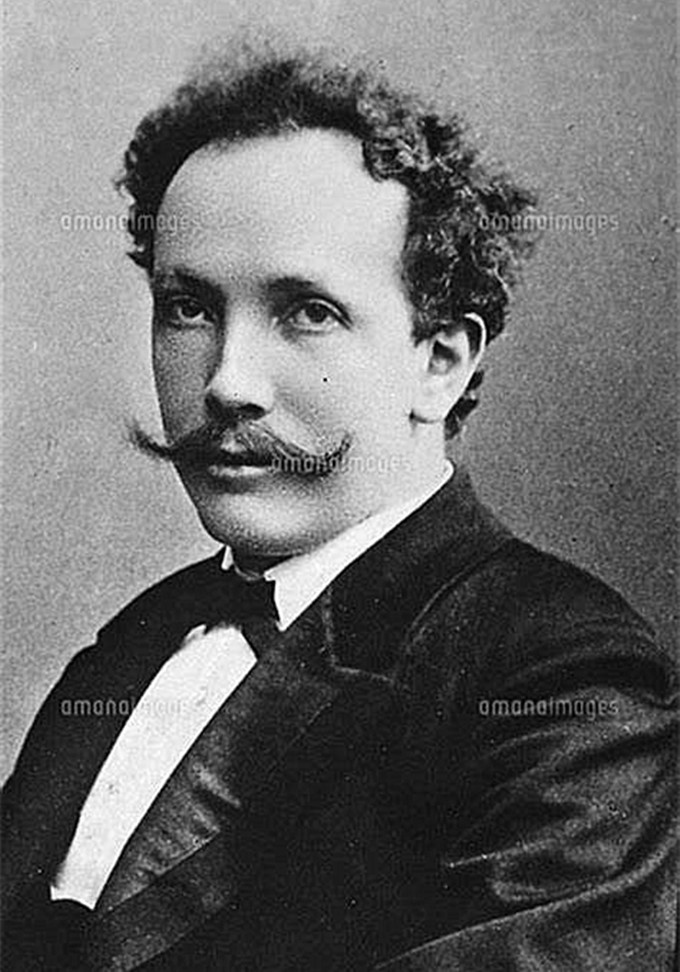 |
|
|
|
| |
理查·施特劳斯(Richard Strauss) |
|
|
|
| |
Today in the
history of music
On July 13, 1935, Richard Strauss was dismissed as director of the
Music bureau of Nazi Germany because a private letter he had written to
the playwriter Stephen Zweig was intercepted with some ideological
heresy: "Do you believe that Mozart wrote music as an 'Aryan'?.Do you
believe that Any of my actions are guided by the thought 'I am a
German'?"
Richard Strauss (1864-1949) was one of the world's greatest opera and
symphony conductors.He is one of the top composers of the 20th
century.Richard Strauss was born in Munich in 1864. His father Franz
Strauss gave his son a good musical education as a horn player in the
Munich Court Opera orchestra.Her mother was the daughter of a successful
Munich brewer.Richard completed some of his earliest works before he was
ten, such as the orchestral Festival March and the short and lovely
Serenade for wind.His early works were in classical form.
On strauss's 85th birthday, a large audience made a speech at the
Bavarian Academy of Arts.He died shortly thereafter in May 1949.
Richard Strauss brought the 19th century love of storytelling and
pictorial music to its zenith.His symphonic poem is a treasure trove of
orchestral works.In some of his works, he foresaw the use of modern
sound effects: the clatter of POTS and pans, the baa quack of a sheep,
the quack of a goose, the quack of a horse, the sound of wind, thunder,
and storm.More importantly, these works are full of movement and
posture, full of excitable sound and emotion.His score shows the most
complex interweaving of individual instruments, page after page dotted
with notes that the ear cannot parse clearly.
Richard Strauss also advanced in his conducting career, and was hired by
both the Munich Opera House and the Weimar Court Opera House.In 1885 he
interrupted his studies at the University of Munich to become assistant
conductor to Hans von Bulow at Meiningen, succeeding Bulow as chief
conductor within a year.Under the influence of Alexander Little, a
violinist in the Miningen band and Wagner's nephew, he turned from
Brahms to Liszt and Wagner.Since 1887, he boldly wrote a series of
symphonic poems and symphonies, making it famous and profitable, and
causing people to debate about the merits and demerits of title music.In
1891 Wagner's wife invited him to Bayreuth to conduct Don Hauser.In
1894, his first opera, Guntram, was mainly under the influence of Wagner
and premiered at Weimar with Pauline DE Ana (who later became his wife)
as the heroine.By this point he seemed to be the ideal successor to
Wagner.He was conductor of the Berlin Philharmonic in 1894, conductor of
the Berlin Royal Opera House in 1898, and conductor of the Vienna Opera
House with Scholk from 1919 to 1924.
At the age of 21, Richard Strauss found his true style in writing vivid
title music, developing what he called "poetry in music, expression in
music".Following his first musical poem, Macbeth (1886 ~ 1890), works in
this form continued to be written: Don Juan (1889), Death and
Purification (1890), The Mischief of Tyre Ellenspiegel (1895), Don
Quixote (1898), The Life of a Hero (1899), and the Family Symphony
(1904).These works shocked conservatives in the late 19th century and
established Strauss as a modern musical "naughty boy" who loved to play
such a role.
His family settled in Garmisch, in Upper Bavaria, after writing Salome
(1905), the first successful and controversial opera.It was the profits
from the opera that enabled him to build his country house."Knight Rose"
marked a Rococo turn.The international popularity of The novel on the
eve of World War I marked the pinnacle of Strauss's career.
His music earned him unprecedented fees and royalties, and he was eager
to dispel the romantic notion that artists were better off starving in
attics.On the contrary, he insisted that "solitude and trouble are
enough to kill a sensitive man, and that sensitivity is the nature of
all perfect art."
Today's video: 1. George Platt conducts the Bambeck Symphony Orchestra
in Richard Strauss's The Thiel Alan Spiegel Hoax;Oscar Sumsky and Glenn
Gould, Richard Strauss sonata for Violin and Piano, Op. 18. |
|
|
|
| |
 |
|
| |
《蒂尔·艾伦施皮格尔的恶作剧》CD唱片封面 |
|
|
|
| |
Till
Eulenspiegels lustige Streiche |
|
|
|
| |
交响诗《蒂尔·艾伦施皮格尔的恶作剧》OP.28 |
|
|
|
| |
这首交响诗作于1894年。蒂尔·艾伦施皮格尔也是个真实的历史人物。其故事见于作者佚名的《蒂尔·艾伦施皮格尔在布伦瑞克》,此书在欧洲非常流行。19世纪又出现在本名为《蒂尔·艾伦施皮格尔和拉梅戈德查克传奇》的新作,把带恶作剧性格的艾伦施皮格尔塑造为16世纪的佛兰芒英雄。此曲1895年首演。以“快活地”开头,小提琴奏“很久很久以前,有一个专爱恶作剧的人”旋律,圆号奏“他叫滑稽的蒂尔”主题,双簧管、单簧管、低音管增强达顶峰。乐队合奏后,单簧管奏快乐的“为非作歹的妖魔”,表现蒂尔的姿态。然后描写蒂尔去冒险,他迈着轻快的步子追找恶作剧场所,“他似乎想了一个花样,乔装打扮,重新蹑足往前走。然后表现市场,蒂尔策马闯入市场,造成混乱,妇女与儿童惊叫着奔逃,他左一下右一下地抡着马鞭”,然后“穿着在童话里有的,跨一步能走7里的长鞋”逃走,躲起来,探头探脑偷看恶作剧结果。接着,蒂尔穿着修士服大讲道德,单簧管、小提琴,然后是圆号、小号、小提琴表示他在讲述道德时内心的不安。独奏小提琴奏急速下降的蒂尔动机,表示蒂尔要驱除这种不安,单簧管奏蒂尔主题,表示“冒充骑士的蒂东,恭敬地向美丽的小姐献殷勤“。蒂尔对其中一个美女动了情,向她求爱,但遭拒绝。遭拒绝后的蒂尔,决心“向全人类报复”,铜管成了这种决心的宣言。单簧管与抵音管表现学者们,蒂尔向他们提出复杂问题,木管的卡农表现大论战,学者们争辩,蒂尔厌烦而离开他们,快活地唱起流行歌曲。进入发展部分,表现蒂尔以种种恶作剧寻找乐趣,最终只剩下小鼓,表现他做尽缺德事,终因以荒诞的残忍而被逮捕。严肃的动机表现他接受审判,但他仍以吹口哨蔑视,被判死刑后,死亡动机被强化,蒂尔战战兢兢地上了绞刑台。当乐曲要结束时,忽然又出现开头的快活旋律,表示蒂尔的一生是结束了,但他的恶作剧仍活在“很久很久以前”的这种故事里,最后以蒂尔主题达高潮而结束 |
|
|
|
| |
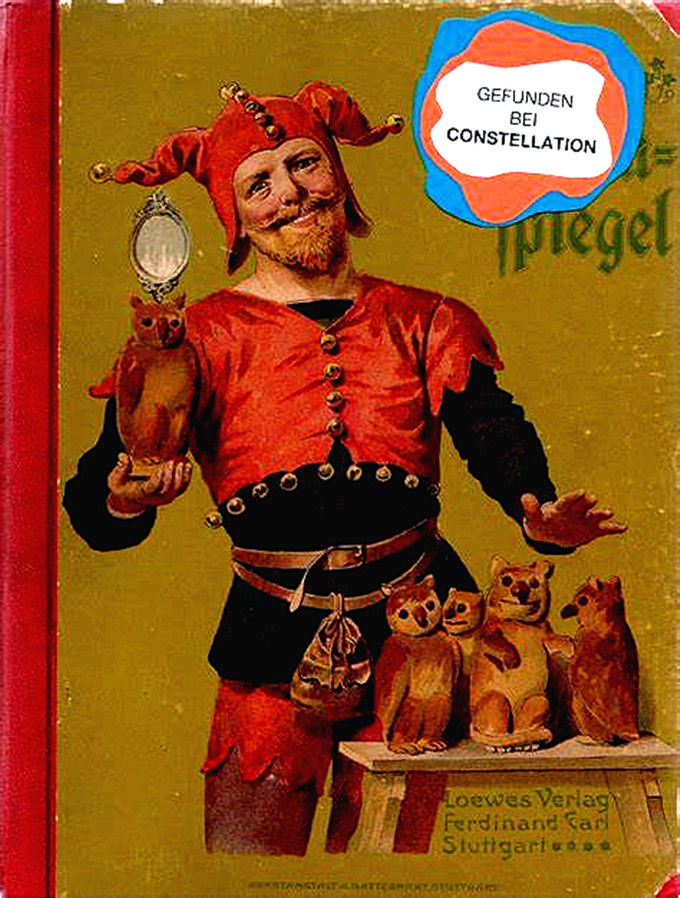 |
|
|
|
| |
《蒂尔·艾伦施皮格尔的恶作剧》CD唱片封面 |
|
|
|
| |
Till
Eulenspiegels lustige Streiche |
|
|
|
| |
This
symphonic poem was written in 1894.Thiel Alan Spiegel is also a
real historical figure.The story is in the author's anonymous
book tyre Allen Spiegel in Brunswick, which is very popular in
Europe.The 19th century saw the return of a new book, entitled
The Legend of Tyre And Lamgoldchuk, which turned the mischievous
Alan Spiegel into a 16th century Flemish hero.It was first
performed in 1895.Beginning with "Jovially", the violins play
"Once upon a time, there was a prankster", the horn plays the
theme "He called the Funny Till", and the oboe, clarinet and
bassoon enhance to a peak.As the orchestra played, the clarinet
played the happy "bogeyman" in Thiel's position.Then Thiel goes
on adventures, with a brisk trot after mischief spots. "He seems
to have thought of a trick, and, in disguise, tiptoes forward
again.Then to show the market, Thiel rode into the market,
causing chaos, women and children screaming and running away,
swinging his whip from left to right ", and then "wearing fairy
tale shoes that can walk seven miles with one step" to escape,
hide, peeking out mischief.Then, in his friar's garb, Thiel
talks about morality, clarinet, violin, then horn, trumpet,
violin, to show his uneasiness in talking about morality.The
rapidity of the solo violin, The Thiel's motive, suggests that
Thiel wants to dispel this uneasiness, and the clarinet is the
Thiel's theme, which means "The horseman Didion, courteously
gallant to the fair lady."Thiel fell in love with one of the
beauties and offered to marry her, but she refused.The brass
became a declaration of thiel's determination to "take revenge
on all mankind" after his rejection.The clarinet and rend
scholars, whom Thiel posed complicated questions, the woodwind
Canon presented polemical questions, the scholars argued, and
Thiel turned away from them in disgust, singing pop songs
cheerfully.In the development part, it shows that Thiel finds
fun in various pranks, and finally only little drum shows that
he does all kinds of immoral things, and is finally arrested for
absurd cruelty.The serious motive showed that he was brought to
trial, but he still whistled contempt. When sentenced to death,
the motive of death was strengthened, and Thiel went trembling
to the gallows.As the music comes to an end, a happy opening
melody suddenly reappears, indicating that Thiel's life is over,
but that his mischief lives on in such stories as "a long, long
time ago," culminating in a Thiel theme. |
|
|
|
| |
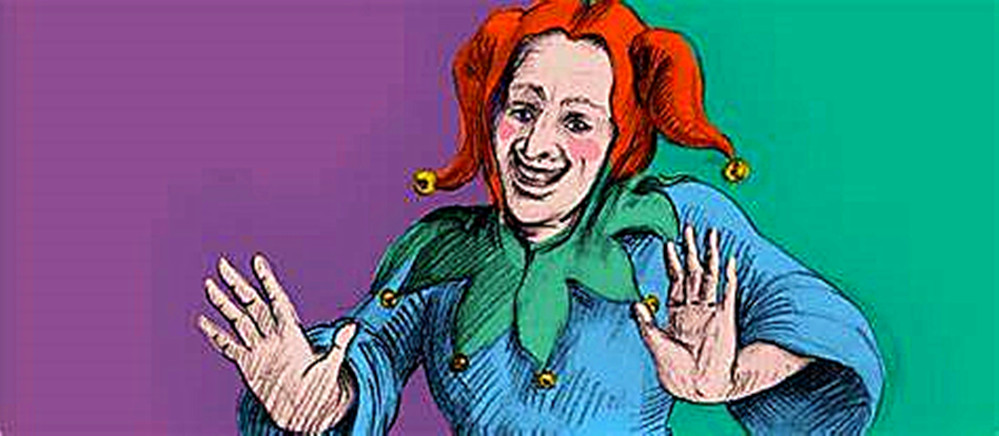 |
|
| |
蒂尔·艾伦施皮格尔也是个真实的历史人物。其故事见于作者佚名的《蒂尔·艾伦施皮格尔在布伦瑞克》,此书在欧洲非常流行。19世纪又出现在本名为《蒂尔·艾伦施皮格尔和拉梅戈德查克传奇》的新作,把带恶作剧性格的艾伦施皮格尔塑造为16世纪的佛兰芒英雄。
|
|
|
|
| |
Thiel Alan Spiegel
is also a real historical figure.The story is in the author's anonymous
book tyre Allen Spiegel in Brunswick, which is very popular in
Europe.The 19th century saw the return of a new book, entitled The
Legend of Tyre And Lamgoldchuk, which turned the mischievous Alan
Spiegel into a 16th century Flemish hero.
|
|
|
|
| |
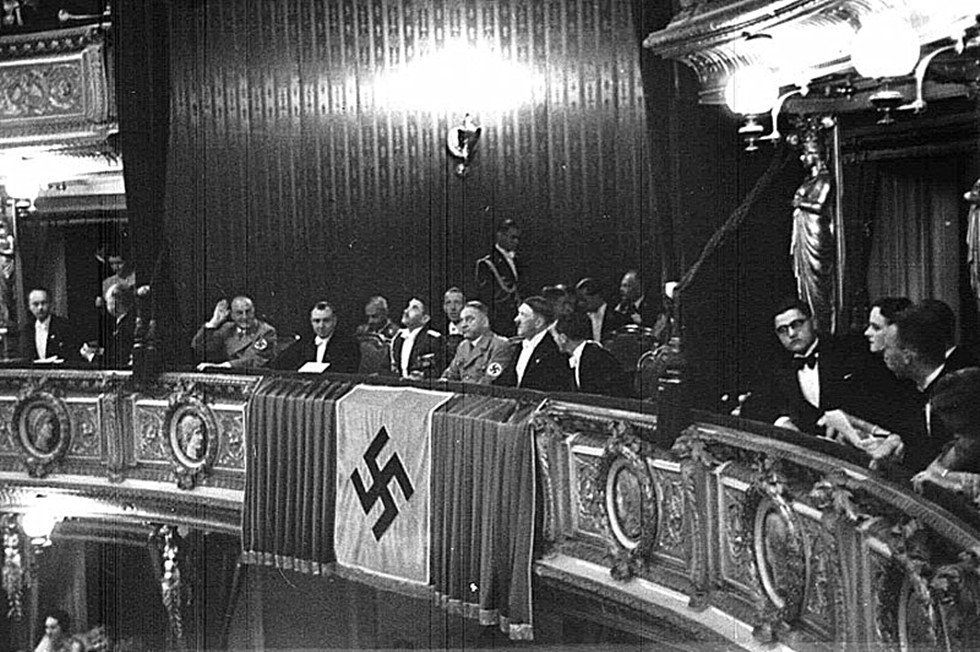 |
|
| |
1938年希特勒等纳粹高官在看理查·施特劳斯的歌剧 |
|
|
|
| |
由于理查·施特劳斯的身世和经历,客观看待理查施特劳斯并非易事,这里似乎有一个根深蒂固的偏见:坚信施特劳斯是上世纪最伟大的音乐人物并没有错,他本也人不需要有谁来替其炫耀自身的伟大;但在上世纪末的几十年中,他与任何音乐家相比,遭受的待遇却最不公平。乍一看,这样的观点令人咋舌——施特劳斯似乎从未像如今这样,在音乐演出中频频出场,备受欢迎;但这里所指的是那“狡猾”的时尚风潮迅速蔓延,主导着音乐趣味的主流——那些自认为激进的弄潮儿,迫不及待地要将年迈的施特劳斯赶进浪漫主义坟墓,给他树碑立传称其为十九世纪最伟大的人物;但他居然胆敢在二十世纪又活了五十年。
这样一个作曲天才居然不想参与音乐语言扩展的宏图大业;这样一个有幸在勃拉姆斯、布鲁克纳时代就已经写出杰作,又有机会超越韦伯恩,而且一直活到布列兹和斯托科夫斯基时代的乐坛耆宿,居然不想在音乐进化的伟大探险中寻求自己的位置,这对于某些批评家而言简直不能思议。但艺术毕竟不是技术——理查施特劳斯和卡尔海因兹斯托科夫斯基之间的区别不能简单地类比成记账计算器和IBM电脑之间的区别。
人们乐于承认其早先一些伟大歌剧的戏剧价值——如《玫瑰骑士》的轻快妩媚、《埃雷赫特拉》令人窒息的冲击。但大多数人似乎已经达成共识:施特劳斯在当了近二十五年先锋派中坚人物后,还没过五十岁就江郎才尽、黔驴技穷,只等着死亡来终结这一窘境了。
此,施特劳斯不仅是二十世纪最伟大的音乐人物,也是二十世纪审美道德最致命的两难窘境中的标靶人物。多么混乱的形式呀!二十世纪人们正在试图抵抗艺术发展决定论不可言状的压力,抵抗集体主义所认可的直线历史演化论——施特劳斯的意义远不止是保守派的支点,在他身上人们发现了一个罕见、深邃的人物,整个历史演化的过程似乎都被他否决了。 |
|
|
|
| |
There seems to be
a deep-rooted prejudice that there is nothing wrong with believing that
Strauss was the greatest musical figure of the last century.But in the
decades leading up to the end of the last century, he was treated more
unfairly than any other musician.At first glance, this view is
astonishing -- Strauss seems to have never been more popular in a
musical performance;But what is referred to here is the rapidly
spreading "sly" fashion that dominated the mainstream of musical taste
-- the self-styled radical trendgoers who were eager to drive the aged
Strauss into the romantic grave, to erect a monument to him as the
greatest of the 19th century;But he had the audacity to live another
fifty years in the twentieth century.
Such a composing genius would not want to be involved in the grand
scheme of musical language expansion;It's amazing to some critics that a
man lucky enough to have written a masterpiece during the Era of Brahms
and Bruckner, the chance to leap-forward Wyborn, and live to the age of
Breetz and Stokowski, doesn't want to take a place in the great
adventure of musical evolution.But art is not technology after all --
the difference between Richard Strauss and Carl Heinzstokowski is not as
simple as the difference between a bookkeeping calculator and an IBM
computer.
People readily acknowledge the dramatic value of some of its earlier
great operas -- the lilt of "The Rose", the breathless impact of
"Herrera".But most people seem to have come to a consensus: after nearly
a quarter of a century as the head of the avant-garde, Strauss ran out
of ideas before he was even 50 and waited for death to put an end to his
embarrassment.
Thus, Strauss is not only the greatest musical figure of the 20th
century, but also the target of the most fatal dilemma of aesthetic
morality in the 20th century.What a mess!Twentieth century people are
trying to resist the pressures of art development determinism during
mastication, resistance to collectivism recognized the significance of
the linear history of evolution - strauss is far more conservative
fulcrum, was found in him a rare, deep character, the history evolution
process appears to be overruled by him. |
|
|
|
| |
|
|
|
|
| |
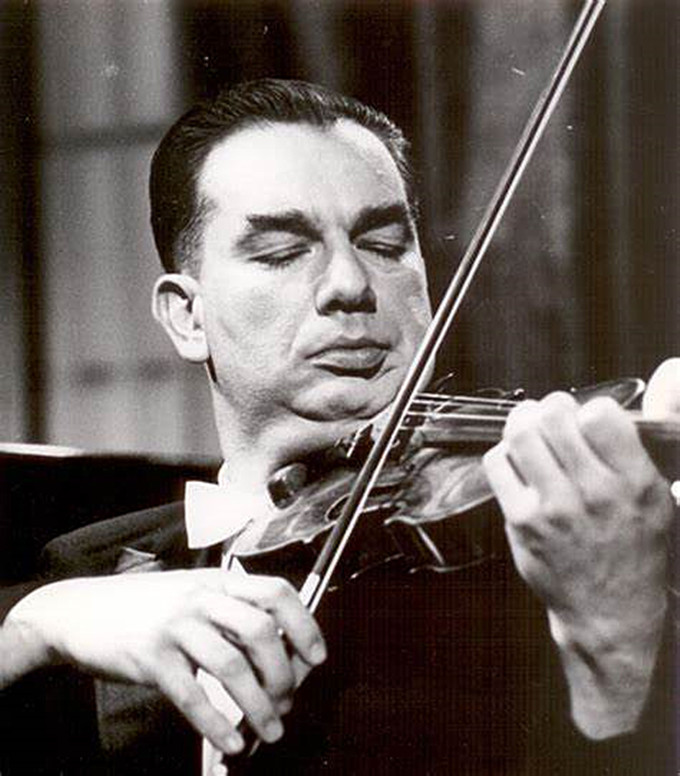 |
|
|
|
| |
奥斯卡·舒姆斯基(Oscar Shumsky
1917-2000) |
|
|
|
| |
美籍俄裔小提琴家奥斯卡·舒姆斯基(Oscar
Shumsky 1917-2000)出生于1917年美国费城,他3岁习琴早熟的音乐天分曾被指挥家列奥波德·斯托科夫斯基(Leopold
Stokowski)誉为”所听过最杰出的天才”!在1925
年Stokowski就邀请舒姆斯基与费城管弦乐团合作莫札特第5号小提琴协奏曲,同年他开始在纽约与名师奥尔(Leopold
Auer)学习,舒姆斯基是奥尔年龄最小的学生。
有一天,我在图书馆见到1985年4月号The
Strad杂志,封面上是一位白发苍苍的老人,那深邃的眼神一下子引起了我的注意。他,就是奥斯卡·舒姆斯基(Oscar
Shumsky,1917-2000)。
后来我逐渐发现,在很多美国音乐家心目中,奥斯卡·舒姆斯基都是令人难以置信的天才。他是俄罗斯犹太移民的后裔,他早年以神童的身份登上乐坛,经久不衰的艺术生涯成为传奇。他不仅是一位小提琴家、中提琴家、指挥家,而且在任何所触及过的领域里都是一个完美主义者。他还是一位出色的摄影师(所拍的黑白照片简直令人叹为观止)。但与此同时,作为一个纯粹的艺术家,奥斯卡·舒姆斯基对商业化的音乐表演深为厌恶,他无法忍受在音乐会后的种种应酬,更不会利用这种社交去寻找所谓的机遇。我暗自思忖:怎么才能认识这位心中仰慕的艺术大师呢? |
|
|
|
| |
Today in the
history of music
On June 13, 1986, Benny Goodman, king of swing music, died in Chicago at
age 75.
Benny Goodman was born in Chicago in 1909;He died in New York in
1986.American clarinetist and jazz musician.Trained in music in a
synagogue.It premiered professionally at the Central Park Theatre in
Chicago in 1921.In 1962, he toured Russia.Played at the Aldeburgh Music
Festival in 1985.
He joined Ben Pollack's band as a soloist in 1925.He went to New York
with Pollack and became a freelancer after 1929.In 1934 to form their
own 12 instruments
The band that created the Swingera.Formed a trio with Teddy Wilson
(piano) and Gene Krupa (drum) in 1935 and expanded to include Lionel
Hampton (vibrato) in 1936.With Budapest in 1938 recorded a clarinet
quintet of Mozart quartet and entrust bartok creation "contrast"
(Contrasts), in 1939 in New York and west getty and bartok debut
together for this piece of music.Soloist with the New York Philharmonic
(conductor Pablo Arelli) in the Mozart concerto.In 1947, he commissioned
Copland and Sindemeter to compose concertos, and performed works by
Bernstein, Brahms, Debussy, Weber, Nelson, Prokofiev, Planck and
Stravinsky as soloists in several American orchestras.The band was
reorganized in 1940 and again in 1948.
Benny Goodman was born on May 30, 1909, in Chicago, Illinois.Goodman
learned to play the clarinet at the age of 11 with Franz Schupp, and at
the age of 12 made his first public appearance in the Style of Ted
Lewis.By 1923, he was a member of the Musicians' Union.In August 1925,
at the age of 16, Gubermann joined Ben Pollack's orchestra, Well, as a
soloist in pollack's orchestra, and in December 1926, Kerdman recorded
his first record with Pollack.In 1928, at the age of 19, Goodman finally
got the chance to lead the recording, recording two songs and a trio.
In 1929, Chandman left Pollack's band to join Ray Nichols' Five-Penny
band.From 1929 to 1933, countless recordings were made.Goodman played
three instruments in the band: the alto saxophone, the alto saxophone,
and the trumpet, but he ultimately failed to surpass his clarinet in
these instruments.Goodman formed his own orchestra in 1934 and Jing
began recording for Columbia Records.In the famous radio series "Let's
Dance", the band's trademarked melody "Let's Dance" became the show's
opening song.In May 1935, the band hit records for Victor records with
"Porters' King Stomps" and "Sometimes I'm Happy".On January 16, 1938,
the band's stunning performance at Carnegie Hall caused a sensation, and
Goodman became a star for his performance of "Sing, Sing, Sing" by Gini
Krupa.
1. 20th century jazz clarinetist Benny Goodman performs Lady Be Good;2.
Benny Goodman Quartet, I Got it (1959);3. "Avalon" by Benny Goodman
Quartet ;4. History of Jazz -- Chapter 27: Benny Goodman, King of Swing..
|
|
|
|
| |
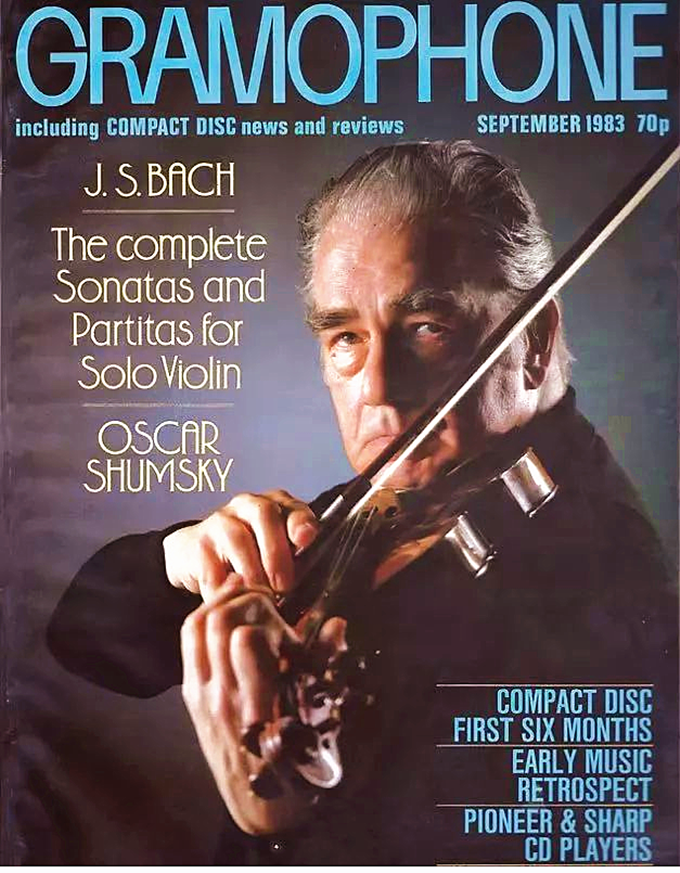 |
|
| |
奥斯卡·舒姆斯基(Oscar Shumsky )是1983年9月号《留声机》杂志封面人物 |
|
|
|
| |
Born
in Philadelphia in 1917, Oscar Shumsky was a Russian violinist
whose precocious musical talents were once hailed by conductor
Leopold Stokowski as "the greatest genius ever heard".Stokowski
invited Shumsky to play Mozart's Violin Concerto No. 5 with the
Philadelphia Orchestra in 1925, the same year he began studying
in New York with Leopold Auer, ORR's youngest student.
One day in The library, I saw The April 1985 issue of The Strad
magazine. On The cover was a white-haired old man.He was Oscar
Shumsky (1917-2000).
As I came to see, Oscar Shumsky was an incredible talent in the
eyes of many American musicians.The son of Russian Jewish
immigrants, he made an early debut as a child prodigy, and his
enduring artistic career became legendary.He was not only a
violinist, a violinist, a conductor, but a perfectionist in
every field he touched.He was also an excellent photographer
(his black and white photographs were breathtaking).But at the
same time, as a pure artist, Oscar Shumsky was deeply disgusted
with the commercial music performance, he could not stand the
various after-concert parties, let alone use such social contact
to seek the so-called opportunities.I wondered to myself: how
could I meet this artist Whom I admired so much? |
|
|
|
| |
|
|
|
|
| |
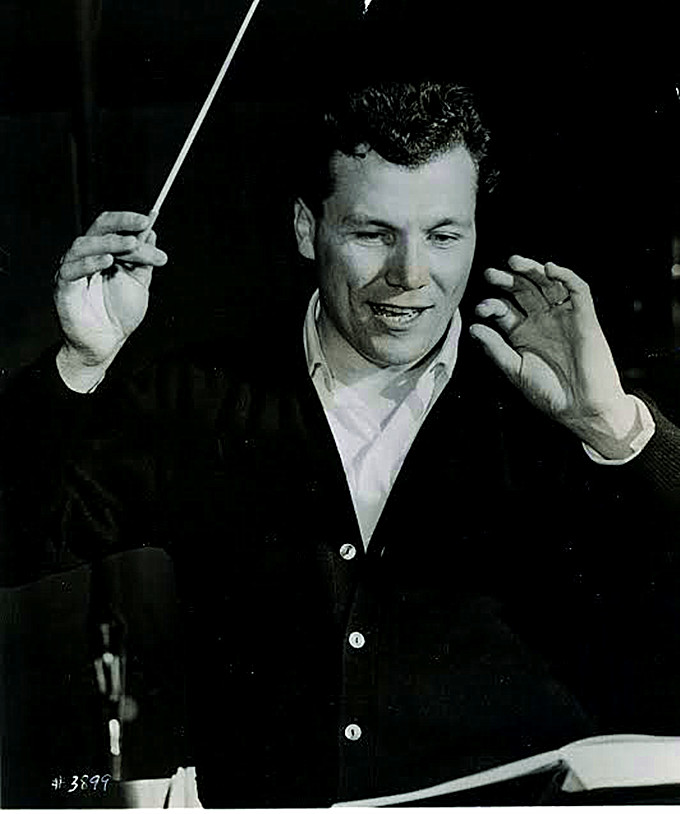 |
|
|
|
| |
乔治·普莱特(Georges Prêtre
1924-2017) |
|
|
|
| |
乔治·普莱特(Georges Prêtre,1924年出生,2017年1月4日逝世 )。音乐指挥家,维也纳金色大厅最高龄的指挥。
他是当今活跃在古典乐坛上的少数几位法国本土指挥大师之一。但其为广大中国乐迷所熟知则主要是因为他在2008年和2010年两次指挥了著名的“维也纳新年音乐会”。
法国指挥大师乔治·普列特(Georges
Prêtre)1924年8月14日出生于法国北部的瓦齐耶,在杜埃和巴黎接受音乐教育,起初主学小号,后转向指挥,之后赴巴黎跟随指挥大师安德烈·克路易坦(AndréCluytens)学习指挥。
乔治·普列特是一位早熟的艺术家,1946年,22岁的他便在巴黎马赛歌剧院正式登台,1959年指挥普朗克的歌剧《人类之声》后成为闻名的现代音乐作品指挥家,担任过许多现代作品的首演,对歌剧也深有研究,成为法国代表性歌剧指挥。
1962年他曾应卡拉扬之邀指挥维也纳国家歌剧院演出过理查、施特劳斯的歌剧
《随想曲》,在大获成功之后,卡拉扬次年再度邀请他指挥了古诺的《浮士德》。
几乎所有重要的音乐舞台都留下过他的足迹,米兰斯卡拉剧院、英国皇家歌剧院、纽约大都会歌剧院、柏林爱乐乐团以及维也纳爱乐乐团等等。
在卡拉斯后期,为其指挥歌剧或演唱会。对法国现代音乐造诣极深,是圣桑、普朗克音乐的权威诠释者。2008年,83岁高龄的乔治·普列特首次执棒维也纳爱乐乐团的新年音乐会,精彩的演出令全球乐迷印象深刻。2010年,85岁的他再度执棒,创下了维新历史上最高龄指挥的记录。
普莱特是少数几位获得至高国际声誉的法国指挥,2004年在他八十大寿之际,被授予法国军团荣誉指挥官勋章,以及奥地利一级科学艺术十字勋章。
这位法国乐坛的领军人物于当地时间2017年1月4日在法国南部小城纳韦去世,享年92岁。 |
|
|
|
| |
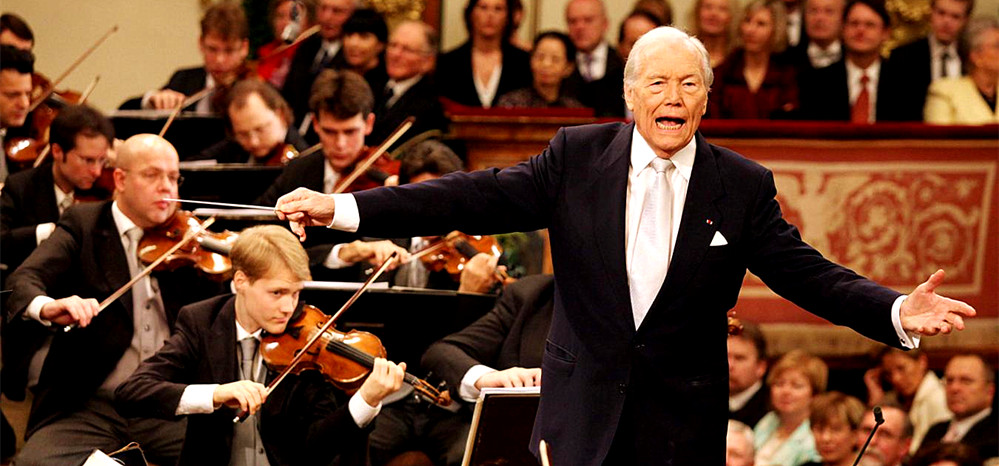 |
|
| |
乔治·普莱特(Georges Prêtre
)是迄今为止 维也纳金色大厅最高龄的指挥家
|
|
|
|
| |
Georges Pretre was by
far the oldest conductor in Vienna's Golden Hall |
|
|
|
| |
Georges
Pretre was born in 1924 and died on 4 January 2017.Conductor,
the oldest conductor in Vienna's Golden Hall.
He is one of the few French conductors active in the classical
music world today.But he is known to Chinese music fans mainly
because he conducted the famous Vienna New Year's Concert in
2008 and 2010.
French conductor Georges Pretre was born in Vazier, northern
France, on August 14, 1924. He received his musical education in
Douai and Paris.
George's column is a precocious artist, 1946, 22, he was in
Paris, Marseilles opera house formal debut, 1959 command
Planck's opera "the sound of human" after becoming famous works
of modern music conductor, served as the opening venue for many
modern works, for opera also have deep research, into the French
representative opera command.
In 1962 he was invited by Karajan to conduct the Viennese State
Opera house for a performance of Richard strauss's "Cappadocia".
After a great success, Karajan invited him again the following
year to conduct Gounoe's "Faust".
He has been to almost every major musical stage, the Milan
Kalla, the Royal Opera House, the Metropolitan Opera, the Berlin
Philharmonic and the Vienna Philharmonic.
In calas's later period, conducting operas or concerts for
her.He has a profound knowledge of French modern music and is
the authoritative interpreter of Saint-Saens and Planck music.In
2008, at the age of 83, George Pratt performed his first New
Year's Concert with the Vienna Philharmonic, impressing music
fans around the world.In 2010, at the age of 85, he returned to
the baton, setting a record for the oldest conductor in the
history of the Reform.
Platt is one of the few French conductors to achieve
international fame, having been awarded the Order of The Legion
d 'Honneur and the Austrian First Class Cross of Science and Art
on his 80th birthday in 2004.
One of France's leading musicians died on January 4, 2017, in
the southern French town of Naves. He was 92. |
|
|
|
| |
|
|
| |
|
|
|
|
| |
奥斯卡·苏姆斯基和格伦·古尔德演奏理查德·施特劳斯《小提琴与钢琴奏鸣曲》作品18 |
|
|
|
| |
Oscar
Sumsky and Glenn Gould perform Richard Strauss
'Sonata for Violin and Piano, Op. 18 |
|
|
|
| |
|
|
|
|
| |
未得原作者编者授权严禁转载www.mt77.com任何内容 |
|
|
|
|
|
|
|
|
|
|
|
|
|
|


